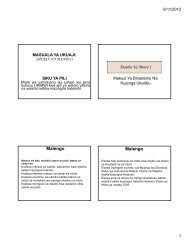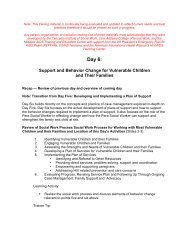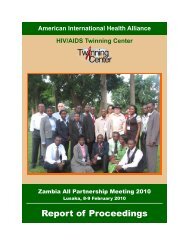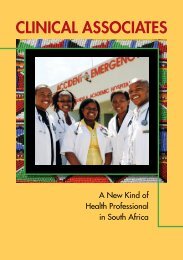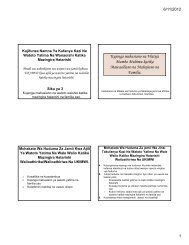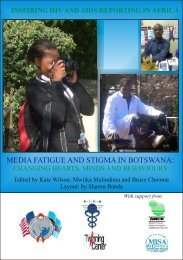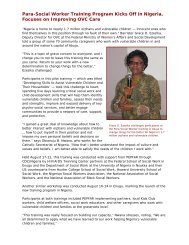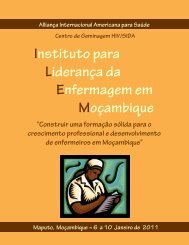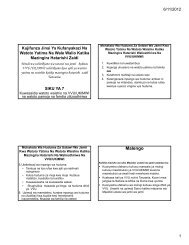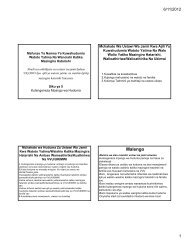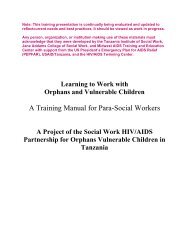Mobilizing Diaspora Volunteers for Public Health Capacity Building
Mobilizing Diaspora Volunteers for Public Health Capacity Building
Mobilizing Diaspora Volunteers for Public Health Capacity Building
Create successful ePaper yourself
Turn your PDF publications into a flip-book with our unique Google optimized e-Paper software.
Introduction and Background<br />
There is a growing recognition that diasporas make meaningful contributions to development ef<strong>for</strong>ts in<br />
their countries of origin through donations of their time, talents, and resources. 1 <strong>Diaspora</strong>s frequently<br />
have the contacts, the knowledge, and the personal commitment to undertake these ef<strong>for</strong>ts alone. But<br />
an emerging body of research and experience also documents organized programs that mobilize the<br />
individual ef<strong>for</strong>ts of diasporas, and occasionally, coordinate the ef<strong>for</strong>ts of diasporas with the objectives<br />
of international agencies and developing country governments. In some cases, partnerships among<br />
diasporas, donors, and developing countries can help international aid agencies and developing country<br />
governments meet development objectives while adding value and structure to diasporas’ individual<br />
initiatives.<br />
A powerful example of where diasporas, donors, and developing country governments have<br />
collaborated is the issue of public health capacity building. Among the range of public health challenges<br />
facing developing countries, few are as daunting as the global HIV/AIDS epidemic. According to the<br />
United Nations Program on HIV/AIDS (UNAIDS) and the World <strong>Health</strong> Organization (WHO), 33.4 million<br />
people were infected with HIV as of 2008 of which over two‐thirds (22.4 million) were in Sub‐Saharan<br />
Africa (see Figure 1). 2 Of the estimated 2.7 million people newly infected with HIV/AIDS each year, 97<br />
percent are in developing countries. By contrast, only about 3 percent of the world’s health workers are<br />
in Sub‐Saharan Africa. 3<br />
International donors have responded vigorously to these challenges. In 2003, US President George W.<br />
Bush launched the largest ef<strong>for</strong>t by any nation to combat the global AIDS epidemic. Between 2003 and<br />
2008, the initiative, which came to be known as the President’s Plan <strong>for</strong> AIDS Relief (PEPFAR), supported<br />
medical treatment to more than 2 million people, care to more than 10 million people, and transmission<br />
prevention services to nearly 16 million pregnant mothers. 4 PEPFAR was reauthorized in July 2008 <strong>for</strong><br />
$48 billion over the period 2009 to 2014. <strong>Building</strong> healthcare capacity to treat HIV/AIDS in developing<br />
countries has been a central component of PEPFAR from its start and is essential to ensuring the<br />
sustainability of HIV/AIDS treatment and prevention in developing countries. 5<br />
1 For a review see Kathleen Newland, ed., <strong>Diaspora</strong>s: The New Partners in Global Development Policy (Washington,<br />
DC: US Agency <strong>for</strong> International Development and Migration Policy Institute, 2010).<br />
2 Data in this paragraph are from United Nations Program on HIV/AIDS (UNAIDS) and World <strong>Health</strong> Organization<br />
(WHO), 2009 AIDS Epidemic Update (Geneva: UNAIDS and WHO, November 2009),<br />
http://data.unaids.org/pub/Report/2009/JC1700_Epi_Update_2009_en.pdf.<br />
3 World <strong>Health</strong> Organization, Task Shifting: Rational Redistribution of Tasks among <strong>Health</strong> Work<strong>for</strong>ce Teams,<br />
Global Recommendations and Guidelines (Geneva: World <strong>Health</strong> Organization, the President’s Emergency Plan <strong>for</strong><br />
AIDS, Malaria and Tuberculosis Relief, and the United Nations Program on HIV/AIDS, 2008),<br />
http://www.who.int/healthsystems/TTR‐TaskShifting.pdf.<br />
4 Office of the United States Global AIDS Coordinator, Celebrating Life: The U.S. President’s Emergency Plan <strong>for</strong><br />
AIDS Relief, 2009 Annual Report to Congress (Washington, DC: PEPFAR, 2009),<br />
http://www.pepfar.gov/documents/organization/113827.pdf.<br />
5 Office of the United States Global AIDS Coordinator, The U.S. President’s Emergency Plan <strong>for</strong> AIDS Relief: Five‐<br />
Year Strategy (Washington, DC: PEPFAR, 2009), www.pepfar.gov/strategy/.<br />
<strong>Mobilizing</strong> <strong>Diaspora</strong> <strong>Volunteers</strong> <strong>for</strong> <strong>Public</strong> <strong>Health</strong> <strong>Capacity</strong> <strong>Building</strong> | 2



